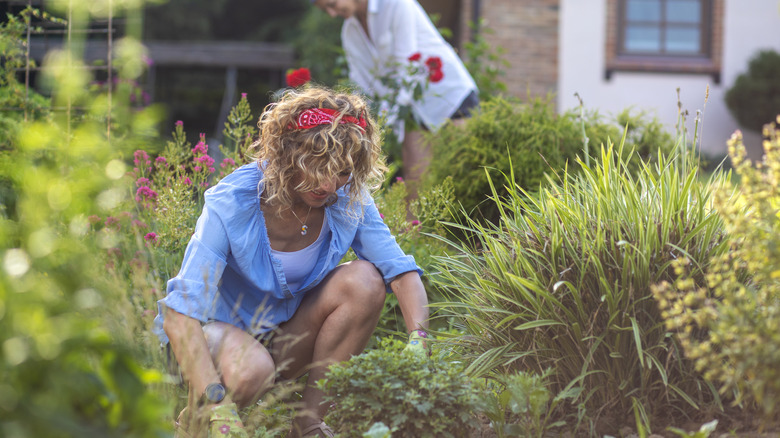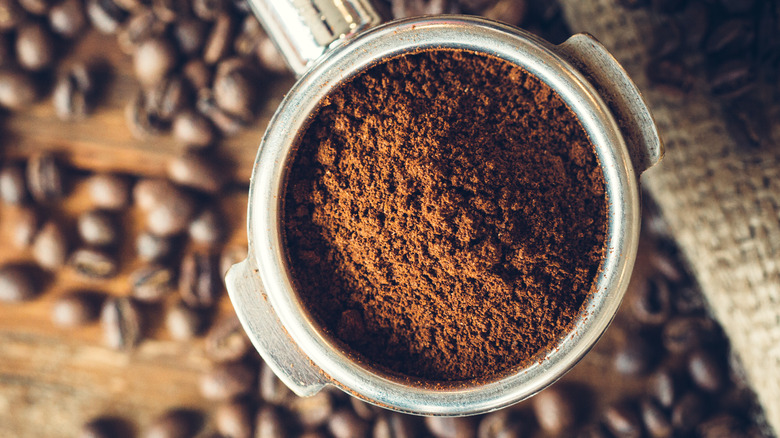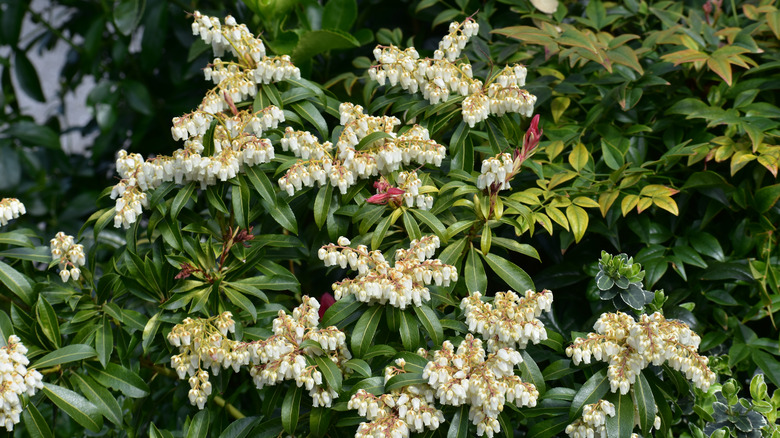The Shade-Loving Shrub You Can Keep Happily Fed With A Common Kitchen Item
If you are looking for an evergreen flowering shrub for shade, the Japanese pieris is a great choice. Also known as Japanese andromeda or lily-of-the-valley shrub, this leathery-leaved beauty blooms with chains of sweetly scented white or pink flowers in spring. The new leaves are a stunning coppery red, gradually fading to green throughout the summer. However, Japanese pieris is a heavy feeder and prefers acidic soil. This means it requires attention to the soil pH balance and regular fertilizing. If you want to feed your shrub naturally, you can use ordinary coffee grounds.
Coffee grounds work as a fertilizer because they are high in the nitrogen the Japanese pieris shrub needs to be healthy. They also help to raise the acidity of the soil. Because Japanese pieris requires an acidic pH level of 5.1 to 6.0, correcting the acidity in more alkaline or neutral soils is important to help this evergreen shrub thrive. The leaves may turn yellow in soil that isn't the correct pH for the plant.
How to use coffee grounds to feed Japanese pieris
Feeding your Japanese pieris naturally with coffee grounds is easy but requires some strategy to be effective. Many people believe that you simply sprinkle brewed grounds onto the soil and the work is done. However, brewing coffee leaches the acid out of the grounds, and the acid is exactly what the Japanese pieris shrub needs for good health. So while used or dried out coffee grounds are fine for many household hacks, Japanese pieris prefers grounds that haven't already been partially turned into coffee.
To use coffee grounds in the soil, spread a thin layer around the base of the shrub. You may want to consider working it into the top layer of soil. Now cover the grounds with a layer of organic mulch. Common mulch materials include compost, shredded leaves, and grass clippings. As this breaks down, it will not only raise the acidity and provide nitrogen, but the mulch will add precious organic matter to the soil. Organic matter is one of the largest contributors to the health of any soil.
Growing Japanese pieris
Besides rich, acidic soil, to grow this pretty spring-blooming shrub you need the right light conditions. While Japanese pieris will grow in full sun, it prefers afternoon shade in hot summer climates. It will survive in full shade, but it will have fewer blooms. Make sure you give this plant plenty of space. Slow-growing to 12 feet tall and 8 feet wide, plenty of smaller varieties of these evergreen shrubs are widely available. This one prefers to have moist soil but does not like soggy feet. If the roots are too wet, this shrub is prone to root rot.
One of the benefits of this evergreen plant is that it requires very little pruning. Just prune off any damaged wood in spring. You can also deadhead the flowers to improve the health of the plant. When you prune, keep your eye out for any signs of the fungal disease leaf spot. You will know it by the red or brown spots that develop on the leaves. Treat it with a fungicide.
Be aware that Japanese pieris is poisonous to both humans and animals when eaten. So, make sure that you grow it in an area where it will be safe from curious pets and children.



